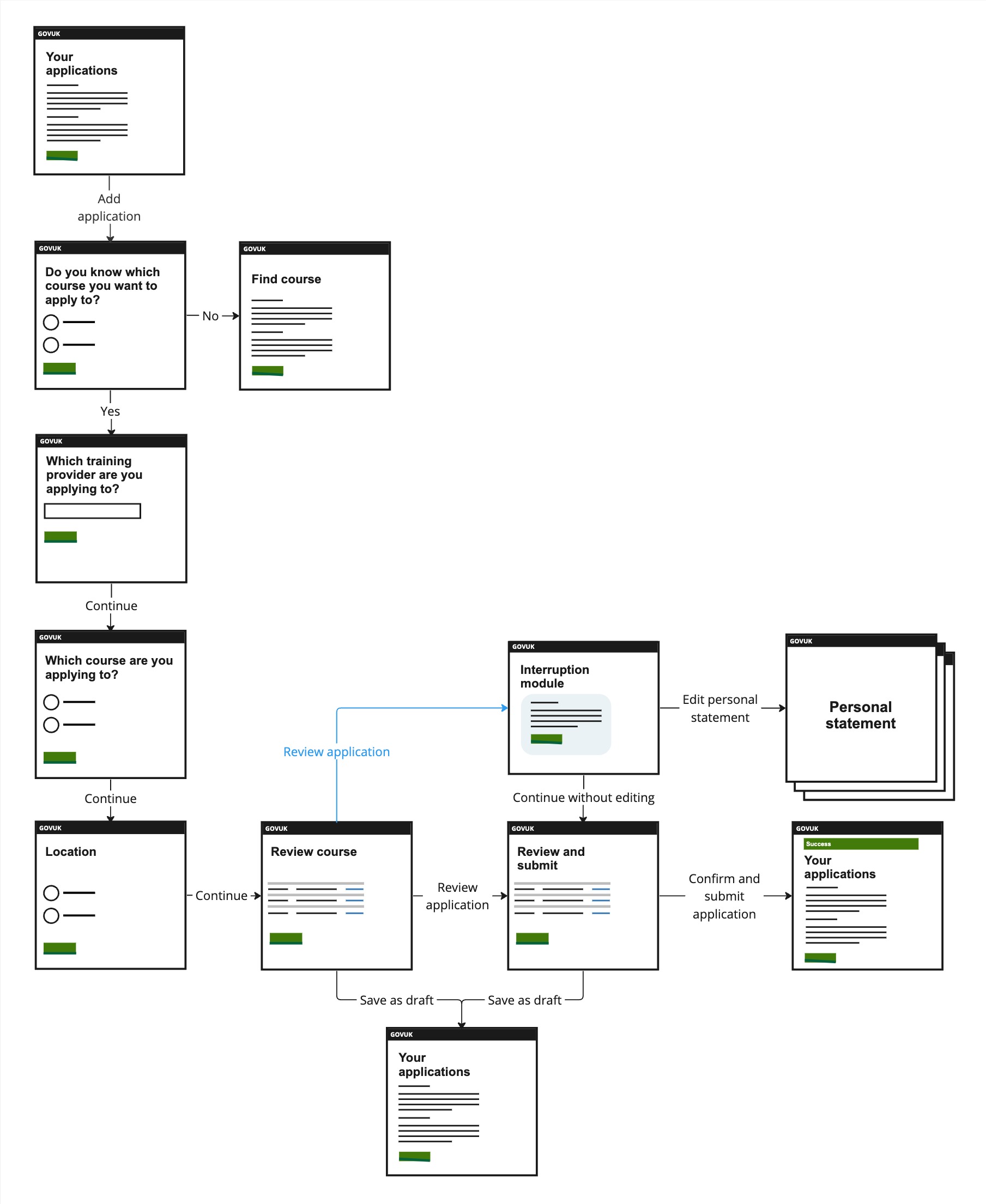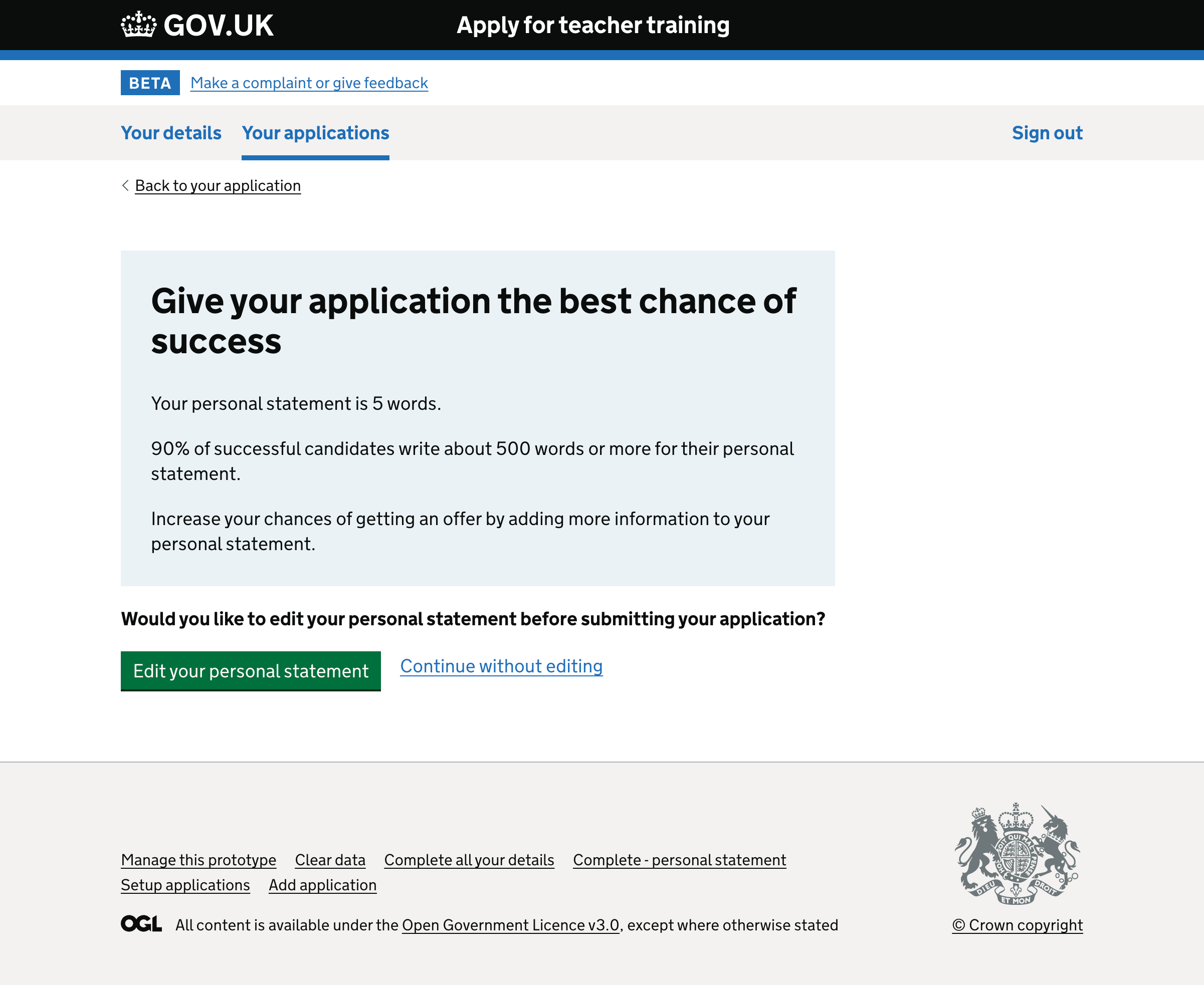
We designed and tested a new pattern in Apply for teacher training (Apply).
The new pattern aims to help candidates improve their personal statement before they submit an application, so they have a better chance of being accepted onto a course.
The issue
We currently stop candidates applying for courses when we are confident a candidate will be rejected. For example, when visa sponsorship is not available for a course they are applying for, but the candidate has said they do not have the right to work or study in the UK.
However, there are other cases where we can help candidates improve their application before they submit. One example of this is when personal statements are too short.
What we did
We designed a new pattern that ‘interrupts’ the user from submitting an application if their personal statement is less than 500 words.
When a candidate adds an application, they choose their training provider, course and location preference. After they’ve made this selection, they can review and then submit their application.
We have added an additional step before the candidate can review their application. If the candidate’s personal statement is less than 500 words, they are taken to a different page telling them their personal statement is too short and we ask the candidate if they want to edit their statement or continue without editing. If they want to edit their statement, they would be navigated to the personal statement page, and the application would be saved as a draft until they are ready to submit. If they choose to continue without editing, then they can review their application and submit it.

The new page uses a blue background with a noticeable header to draw attention of the importance of the message. The first sentence includes how many words candidate has written in their personal statement.
The next sentence tells the candidate that 90% of successful candidates write 500 or more words for their statement. We got this statistic from our data analysis of successful candidates. This sentence was added to try and influence the behaviour of candidates who might feel they should copy the behaviour of successful candidates. People often like to know they are doing the same thing as others who are successful.
We also give them advice and an option to go back and edit their personal statement or submit the application if they choose to.

User testing
We conducted user research sessions in November 2023. We found that:
-
most users noticed and read the new page, except for one user who missed it entirely
-
users were attracted to read the message because ‘graphically it stood out’.
“as someone who does have bad eyesight it’s visually clear to see.” - research participant 4
- most users were drawn to the statistic ‘90% of successful candidates write about 500 words or more’.
“What stands out to me is '90% of successful candidates write this.” - research participant 2
-
all users understood that the purpose of the message was to encourage candidates to write more to increase their chance of getting and offer
-
there was no clear consensus if the submit and edit CTA’s (calls to action) should stay as they are or if the edit button should come before submitting
-
all users would go back and edit their application after receiving this message
-
the new page was perceived as ‘supporting’ candidates to do well
“I really like this, that it gives you the option to go back and improve your PS. I really feel that you are being supported by the Department for Education” - research participant 4
“Most things I have applied for e.g. Uni applications, don’t give guidance. It feels like they care, and they want you to do well and hopefully become a successful candidate from it.” - research participant 3
Further considerations
We need to track submitted applications after this design pattern has been implemented to see if candidates are going back to edit their statements.
We also want to think about other scenarios that would be helpful to interrupt a candidate while they are submitting their application. For example, warning candidates that they are submitting their application with only 2 character references, when they should be submitting at least one professional or academic reference. Or warning them that this particular course only accepts degree with grade 2:2 and higher.